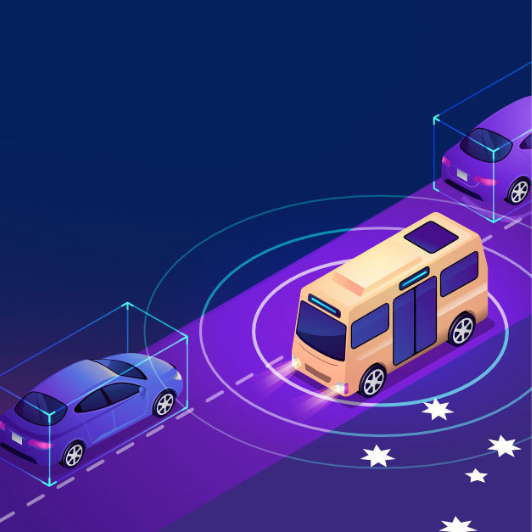Published: Apr 12, 2023
the electric vehicle transition - how do we ensure a sustainable future?
How organisations can move forward with electric vehicles
Our planet is already 1.1°C warmer than it was in the late 1800s and continues to rise.1
With growing concern globally from citizens around climate change, sustainability should no longer be an outlying factor, but at the forefront of your operational strategy. According to digital transformation strategist, Babu Krishnamoorthy, “alignment with the sentiment of community concern around climate change is essential to winning the hearts and minds of customers”. For the transport and logistics sector, transitioning to electric vehicles (EV’s) is a key step in addressing global climate change.
What’s the state of play in Australia?
Uptake of EVs in Australia is increasing2 across all segments including cars, buses and trucks,
While there is a lack of consistency between states in terms of rules and incentives to encourage EV uptake there is a growing appetite by governments and regulators across the board to accelerate the shift away from internal combustion engines (ICEs).
Mayor of Noosa Council, Tony Wellington reinforced the opportunities and benefits of embracing EV stating “The shift to electric Vehicles is an absolute no brainer, the technology is already here, rapidly improving and increasingly affordable. Electric Vehicles provide tangible, direct benefits for the individual, the community and the planet. Governments at all levels need to start showing leadership and stop dragging their heels. Noosa’s current electric bus trial is just the beginning of the transport revolution in our local government area”3
Challenges remain
From vehicle availability and price uncertainty to charging complexities and perceptions of operational risk, transitioning to EVs can seem daunting. Here are some of the most common challenges we hear from clients.
Aren’t EVs expensive?
EVs aren’t cheap, especially in comparison with their ICE equivalents. There is a lack of availability in Australia, which adds to this concern and according to NCS Australia’s Transport & Logistics Leader, Tim Staley “organisations don't want to place a big bet on an expensive outlay without historical data supporting the business case.”
Almost all major manufacturers have now committed to the rollout of EV models with many announcing cut off dates for the production of ICEs, which is expected to lower prices for consumers.
Many countries have set dates to phase out ICE vehicle sales completely and implement incentives to encourage uptake. For example, in June 2022, the ATO announced a proposal to remove fringe benefits tax on eligible electric cars, further incentivising the uptake of EV’s in Australia4.
There are also cost benefits related to running costs. When it comes to how we generate electricity, shifting your fleets to renewable energy such as solar or wind power is far cheaper than fossil fuels5. When looking at maintenance and servicing costs, it has also been discovered that pricing reduces significantly over time when using an EV over an ICE vehicle6.
While we’re several years away from price parity, the long-term view on cost has a positive story. According to Babu, “there is a cost of ownership that balances itself over the lifetime of the vehicle.”
The infrastructure just isn’t there
Where businesses and consumer are moving between capital cities or over long distances, there is a significant feeling of ‘range anxiety’. The lack of charging infrastructure is a challenge that needs to be addressed in order for fleet and private vehicle owners to feel comfortable.
While charging infrastructure hasn’t been built out sufficiently yet, steps are being made. For example, as part of the Australian Government’s Future Fuels and Vehicles strategy, there was an additional investment of $16.5million in grants announced in 2021 to support EV-fast charging stations across capital cities and regional centres7.
As a result, Australia can expect to see more electric vehicle charging and hydrogen refuelling infrastructure where it is needed and other incentives for organisations to adopt the change.
What about the life of batteries?
Batteries are one of the common pain points for those wanting to transition to an EV. Given the new technology, there are several uncertainties around battery replacement and how long they will last.
An EV battery in a standard electric vehicle generally reaches its end-of-life at 70% capacity (they approximately last between 10 – 20 years and to replace one can cost $10,000 or more depending on the model). Fortunately, today’s EVs have been engineered to go the distance and are covered by law, under warranty for at least eight years or 160,000 Km’s8.
While there still needs to be further research into the long-term use of EV batteries, manufacturers such as Tesla are finding new ways to innovate9. By recycling batteries and extending the life of battery packs, it’s possible to close the manufacturing loop and create a circular economy.
EV opportunities
There is a significant opportunity for the transport and logistics sector to lead the charge and move away from using fossil fuels and outdated technology - in fact, they can actually influence this space and position themselves for future growth.
While there is still ongoing debate around whether EVs or hydrogen fuel cell vehicles are the right solution, there are some steps you can take as an organisation to start your journey toward a greener future.
Here are our top tips for driving the change:
Revisit operational fundamentals: It is important to address myths around operations, while providing opportunities to overcome objections, understand risk/reward and create value. Tim Staley states, “while organisations are looking to invest in electric vehicles in order to spend less on fuel (for example), there is latent hesitancy to adopt and embrace EV’s and build efficiencies into KPI’s…In order to realise the benefit, organisations are going to need to start running some EV thinking workshops to unpack long held operational assumptions, resolve issues and embrace the inevitability”.
For such a fast pace and changing environment, it’s important to incorporate strategies for rapid product development and roll out of new systems and platforms. Businesses need a more agile approach, moving away from the traditional waterfall method.
Reimagine data and reporting: With journey planning becoming more prominent within the logistics industry, businesses need to be able to capture the right data. From parking and charging locations to route tracking, it’s important to leverage emerging technology to produce accurate reporting on how your operations should function during the transition.
More broadly, the shift to a new energy platform provides an opportunity for organisations to rethink how data can be used to drive innovation.
Realign partnerships: The EV ecosystem is vast, and one that needs public and private sectors to come together to drive change. To build a successful green transport ecosystem, organisations need to work together – governments, energy providers, network operators and manufacturers should be collaborating to navigate the change.
“By being an early adopter and a big player, you have the ability to influence the space. If you’re an SMB, you can take advantage of the efficiencies of the larger organisations and use it as a mechanism to promote your zero emissions fleet.” - Babu Krishnamoorthy.
While there may be some challenges, Babu says “the future of EV's is bright. It's the future of mobility, logistics and transport from a fuel perspective”.
To learn more about the key trends driving the Australian transport and logistic market, click here.
[1] https://www.un.org/en/climatechange/net-zero-coalition
[2] https://www.pv-magazine-australia.com/2022/10/18/australian-ev-market-share-grows-65-in-2022/
[5] https://www.weforum.org/agenda/2021/07/renewables-cheapest-energy-source/
[7] https://www.industry.gov.au/news/machinery-government-mog-changes-our-department-1-july-2022
[9] https://www.tesla.com/en_au/support/sustainability-recycling
All details, images and statements are based on the intention of, and information available to NCSI (Australia) Pty Ltd and its related body corporates (together, ‘NCS Australia’) as at the time of publication on March 2023 and may change due to future circumstances. This document is not legally binding on NCS Australia. NCS Australia does not give any warranty in relation to any information contained in this document. NCS Australia does not accept any liability for loss or damage arising as a result of any reliance on this document or its contents.



